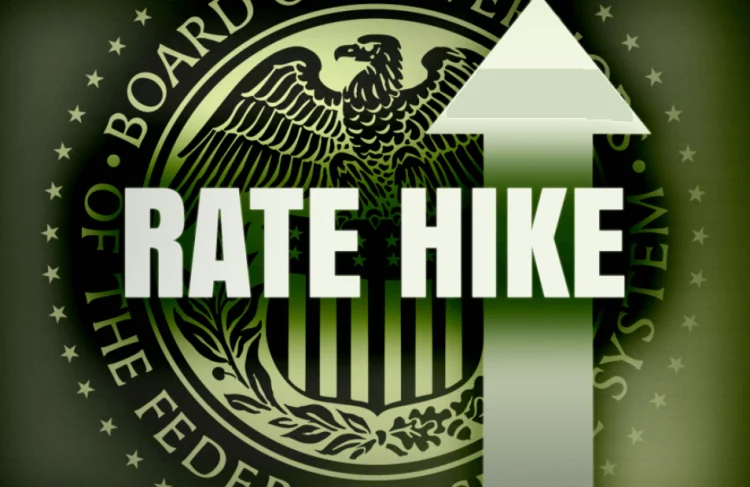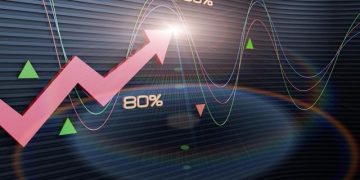Introduction: The Impact of a Federal Reserve Rate Hike and Market Reactions
In recent years, the U.S. economy has gradually recovered from the severe disruptions caused by the COVID-19 pandemic. However, as economic activity rebounds, inflation has steadily risen, forcing the Federal Reserve to make tough decisions: Should it hike interest rates to control inflation, or maintain a more accommodative policy to support ongoing economic growth?
The actions of the Federal Reserve don’t just affect the U.S. economy—they have profound consequences for global markets. Interest rate hikes typically mean higher borrowing costs, which can lead to stock market volatility, shifts in bond prices, and even changes in global capital flows. So, is an interest rate hike on the horizon? And if it happens, how will it affect market trends worldwide?
In this article, we’ll break down the latest economic data, examine how it might prompt a rate hike, and analyze the potential ripple effects that such a move could have on global financial markets.
Chapter 1: The Federal Reserve’s Mandates and Current Economic Environment
Understanding the Federal Reserve’s Role
The Federal Reserve, as the central bank of the United States, plays a crucial role in maintaining economic stability. Its primary mandates are to promote maximum employment, ensure price stability (low inflation), and moderate long-term interest rates. These objectives are achieved through tools such as interest rate adjustments, open market operations, and quantitative easing.
In recent years, the Fed has kept interest rates near zero to support the economy during the pandemic. However, as inflationary pressures rise, there is growing speculation about when the central bank will start tightening its monetary policy by raising rates.
Current Economic Conditions: Inflation and Employment
- Inflation: Inflation in the U.S. has surged to multi-decade highs, driven by supply chain disruptions, pent-up consumer demand, and rising energy prices. As of the latest data, inflation stands well above the Federal Reserve’s target of 2%. If inflation remains elevated, the Fed may feel compelled to take action, possibly through interest rate hikes, to prevent it from spiraling out of control.
- Unemployment and Job Growth: The labor market in the U.S. has shown strong signs of recovery. Unemployment rates have fallen significantly from pandemic highs, and job growth has been robust. With labor demand outpacing supply, wage inflation has also picked up, contributing further to inflationary pressures.
The combination of high inflation and a relatively tight labor market puts the Fed in a challenging position. On one hand, it wants to prevent the economy from overheating, but on the other, it must balance this with the risk of stifling economic growth.
Chapter 2: Economic Indicators and Their Implications for Interest Rate Hikes
Key Economic Data to Watch
Several key economic indicators will likely influence the Federal Reserve’s decision on whether to raise interest rates. Let’s take a closer look at some of the most important data points and how they could impact global markets:
- Consumer Price Index (CPI): The CPI is the primary measure of inflation in the U.S. When this index rises significantly, it signals that the purchasing power of the dollar is decreasing, which is a concern for both consumers and policymakers. A persistently high CPI would likely prompt the Fed to take action to cool off the economy by raising interest rates.
- Core Inflation: The core inflation measure excludes volatile food and energy prices, providing a more stable gauge of underlying price trends. If core inflation remains elevated, it suggests that inflationary pressures are not just temporary, and the Fed may respond with a more aggressive rate-hiking stance.
- GDP Growth: GDP growth is another crucial indicator of economic health. Strong GDP growth typically supports the case for higher interest rates, as it suggests that the economy is robust enough to handle tightening. Conversely, if GDP growth slows down or turns negative, the Fed may hold off on hiking rates to avoid stifling the recovery.
- Employment Data: The Federal Reserve monitors job creation, wage growth, and unemployment rates to gauge the overall health of the labor market. A tight labor market with rising wages can contribute to inflation, which might prompt the Fed to take preemptive action by raising rates.
- Consumer Confidence and Retail Sales: High consumer confidence and strong retail sales are indicative of robust demand in the economy, which could further fuel inflationary pressures. Conversely, if consumer sentiment weakens, it might signal that the economy is slowing, reducing the urgency for rate hikes.
Is a Rate Hike Imminent?
Based on recent economic data, many analysts believe that an interest rate hike could be imminent, especially if inflation remains high. The Federal Reserve has already indicated its willingness to take action to curb inflation, and with the economy showing strength in key areas like employment and GDP growth, the conditions seem ripe for a tightening of monetary policy.
The market is closely watching the Fed’s stance on rate hikes, and while many investors expect a gradual increase in rates, the central bank’s decision will be heavily influenced by upcoming economic reports, particularly inflation and GDP data.
Chapter 3: How a Federal Reserve Rate Hike Could Impact Global Markets
Impact on U.S. Equity Markets
An interest rate hike typically causes higher borrowing costs, which can lead to reduced corporate earnings and lower stock valuations. When the Fed raises interest rates, the cost of financing increases for businesses and consumers, which can lead to a slowdown in spending and investment. This can negatively affect sectors like technology, which often rely on cheap credit for growth.
On the other hand, financial stocks (e.g., banks and insurers) tend to benefit from rising interest rates, as higher rates often improve their profit margins. Sectors such as energy and consumer staples may also perform better, as their performance is often more closely tied to inflationary pressures than to borrowing costs.
Additionally, the Fed’s tightening measures can lead to increased market volatility, as investors react to the changing environment. If the Fed raises rates too aggressively, it could potentially trigger a correction in the stock market.

Impact on Bond Markets
Bond markets are directly affected by interest rate hikes. As the Fed raises rates, newly issued bonds offer higher yields, which can make existing bonds with lower yields less attractive. As a result, bond prices typically fall in anticipation of higher rates. The yield curve, which plots the interest rates of bonds of varying maturities, could also flatten or invert, signaling investor concerns about future economic growth.
Rising interest rates also have implications for global bond markets. In emerging markets, for example, higher U.S. rates can lead to capital outflows, as investors seek higher yields in U.S. assets. This can put pressure on local currencies and lead to higher borrowing costs for emerging market governments and companies.
Impact on Currency and Global Capital Flows
A Fed rate hike often strengthens the U.S. dollar because higher interest rates attract foreign investment. As U.S. bond yields rise, international investors may move capital into the U.S. market to take advantage of higher returns. A stronger dollar can have mixed effects on global markets: it can make U.S. exports more expensive, which could hurt the earnings of multinational corporations, but it can also provide a safe-haven asset for global investors during times of uncertainty.
Emerging market currencies are often the most vulnerable to U.S. rate hikes. As the dollar strengthens, capital tends to flow out of these markets, leading to currency depreciation and potentially increasing the cost of servicing dollar-denominated debt. This can create financial instability in countries with significant foreign debt exposure.
Global Stock Markets and Commodities
A rate hike by the Fed can also affect global stock markets, particularly in developing economies. If U.S. interest rates rise, investors may shift their capital away from riskier assets in emerging markets to safer, higher-yielding U.S. assets. This could result in declines in equity markets, especially in countries with weaker economic fundamentals.
Additionally, commodity markets are sensitive to changes in interest rates. Higher rates can dampen demand for commodities like oil and gold, as higher borrowing costs may reduce consumer spending and business investment. On the other hand, commodities like gold are often seen as a hedge against inflation, and if inflation continues to rise, gold may see increased demand, even in a higher-rate environment.
Conclusion: Navigating Uncertainty and Preparing for Rate Hikes
As the U.S. economy continues to recover from the pandemic, inflation remains a critical issue that the Federal Reserve will have to address. The latest economic data suggests that a rate hike could be on the horizon, as the Fed looks to curb inflation without derailing the economic recovery.
For global markets, the implications of a Fed rate hike are complex and far-reaching. While some sectors may benefit, others could face headwinds as borrowing costs rise and investor sentiment shifts. As we move forward, investors must remain agile, adjusting their strategies to account for potential rate hikes and their effects on various asset classes.
Understanding how economic data points—such as inflation, employment, and GDP growth—interact with the Fed’s monetary policy decisions will be key to navigating this uncertain environment. Investors who stay informed and adapt to the changing economic landscape will be better positioned to make informed decisions as the Fed’s next moves unfold.


















































